When we were in Pedasi, Panama and planning our time in Colombia, we had a five day gap between when our five-week apartment rental in Medellin ended and our reservations in Mexico started. Ann wanted to visit Cartagena since “we can’t be so close and not go”; Ian had little interest, but was won over when we found a $55 per person flight for our date. To be clear, Cartagena was never under consideration as a potential expat location, we just got to play tourist for five days.
Cartagena Overview
Cartagena has three areas that are of primary interest to tourists. The historic center (referred to as either old town or old city or walled city), Bocagrande (more affluent area with beaches), and Getsemani (one of four neighborhoods within the walled city). We chose to base ourselves in Bocagrande because given Cartagena’s climate, we wanted to be close to the beach. Unfortunately, our large, well-appointed 2 bedroom Airbnb (which we shared with our friends, Leah and Steven) was in an older building with A/C only in the master bedroom.
Since the taxis in Cartagena are not metered, it’s important to ask what the fare will be to your destination before getting into one. Taxis from the airport to Bocagrande are 18500 pesos ($6.50 at time of writing. When exiting the terminal, find the booth along the wall to the left, state your destination, and you will be told the fare. Elsewhere in town, simply ask the driver when you hail the cab (or it hails you, as is often the case). A taxi between the old city and Bocagrande is 8000 pesos. Buses exist, but our Airbnb host told us that they are not easy to use, especially for tourists, and with the taxis being so inexpensive, we decided to give the buses a pass. Traffic is not too bad, especially when compared to Medellin, where we often felt that drivers were trying hard to run us over.
Bocagrande
Bocagrande is an area close to the beach consisting primarily of condo towers.

The neighborhood has several large and small grocery stores and a variety of restaurants, from fast-food chains to local inexpensive eateries to more upscale international cuisine. And Ian was pleased to find several places offering a variety of yummy, if not especially healthy, empanadas. And yes, Ann indulged herself too. On our first night in town, we had a typical paisa (country) meal, complete with soup, protein (in this case, fish, as we were by the sea), rice, beans, fried plantains, and a beverage for 18000 pesos. Unlike Medellin, where we could choose a fresh fruit juice, in Cartagena, we had a choice of a bottle of soda. We did, however, have juice with our paisa lunch on another day.
In this area, one can take a pleasant (if a bit hot) walk around the peninsula, which we did. We also walked (about 45 minutes) to the old walled city on a couple of occasions. When we asked directions, our Airbnb host told us to walk all the way down Carrera 2, also named Avenida San Martin, which turned out to be a busy traffic street. About halfway there, we realized that we could walk along the malecon next to the sea, with its refreshing breeze. The climate in Cartagena is hot, and unfortunately the breeze is usually felt only within a block of the beach.
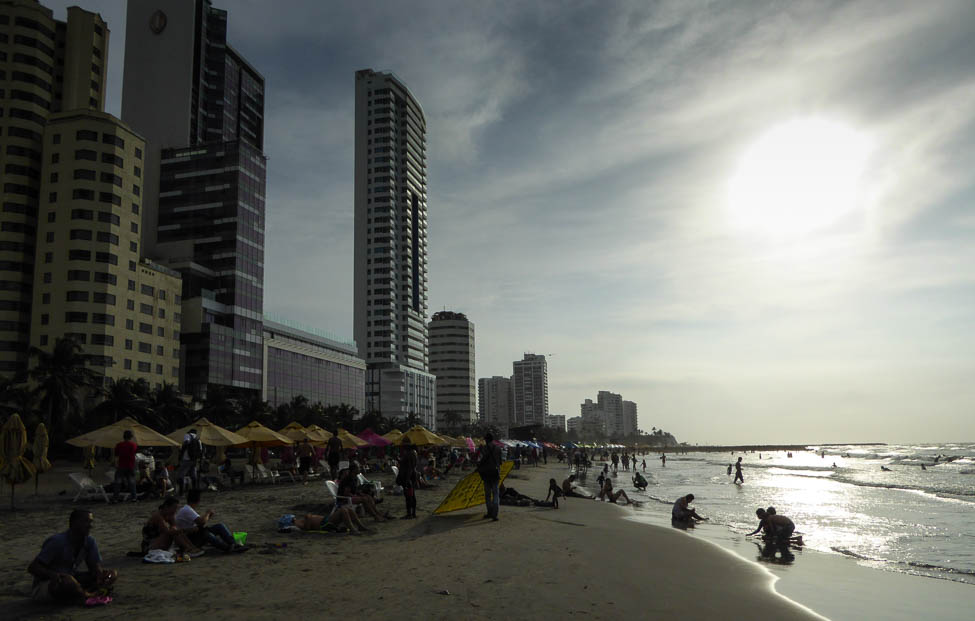
The beach is relatively flat and quite long, making it a good walking beach, and the sea, although not particularly clear, has pleasant water temperatures. However, the beach is also quite crowded, with primarily Colombian tourists and a seemingly almost equal number of vendors. A person could probably get most of their basic needs met without ever leaving the beach: the usual chair and umbrella rentals and water activities, a variety of food and drink (including both alcoholic and non-alcoholic beverages), clothing, hats, sunglasses, jewelry, souvenirs, and a massage. When walking along the beach, stop for more than a few seconds, and some vendor will take notice. Fortunately, however, these beach vendors usually accept a simple “no” or “no gracias”, and move on.
Cartagena’s Old Walled City

The old city is surrounded by a still standing wall dating mostly from the 1600’s.

We wandered this area of historic buildings, churches, clock tower, cobblestone streets, parks and squares on two different occasions, during daylight and after dark.
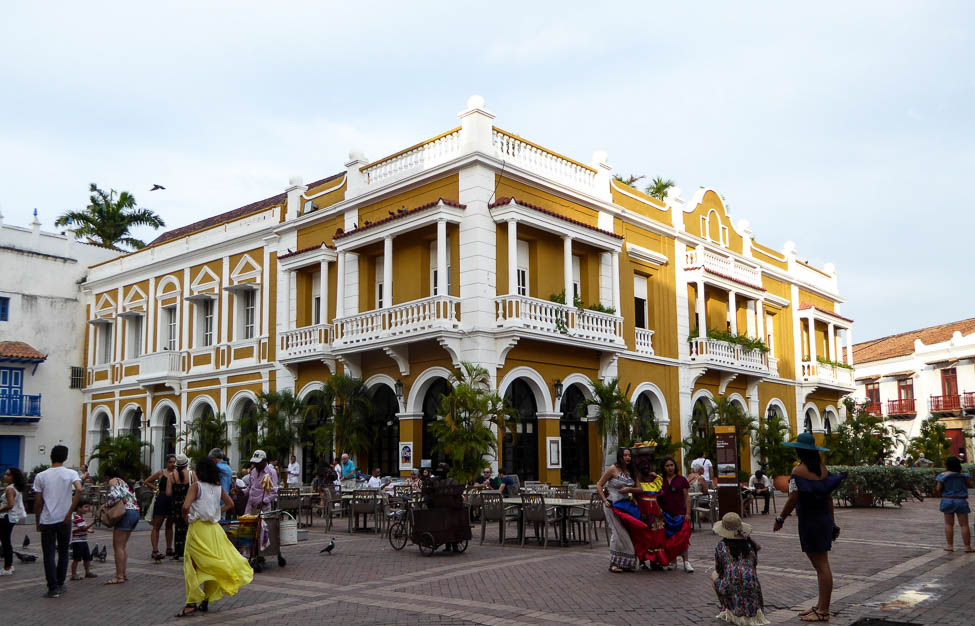
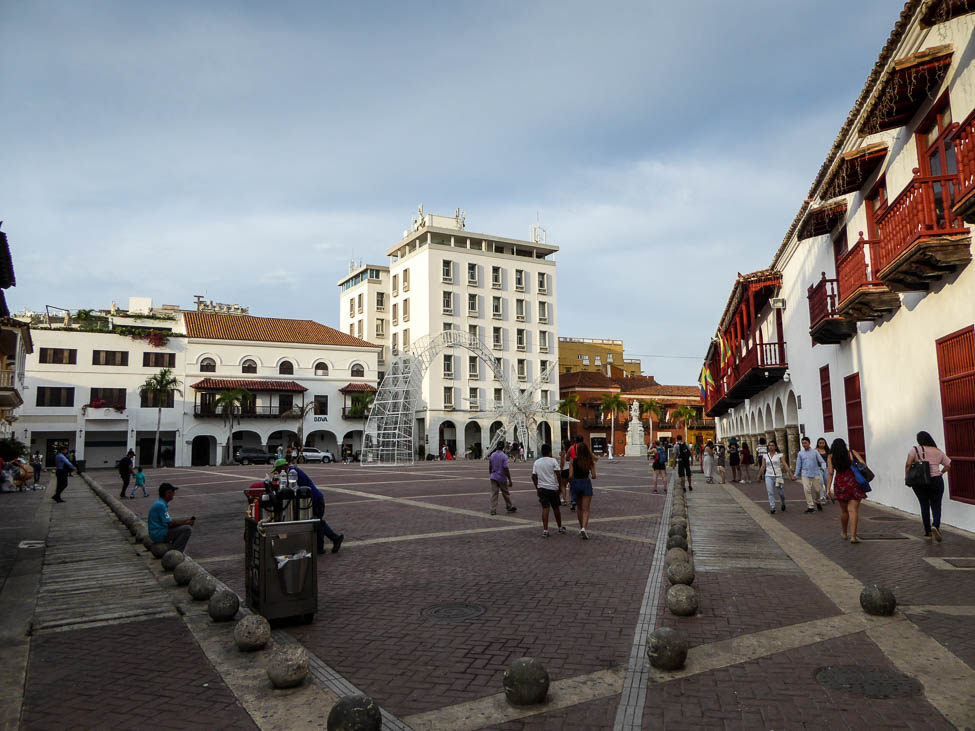
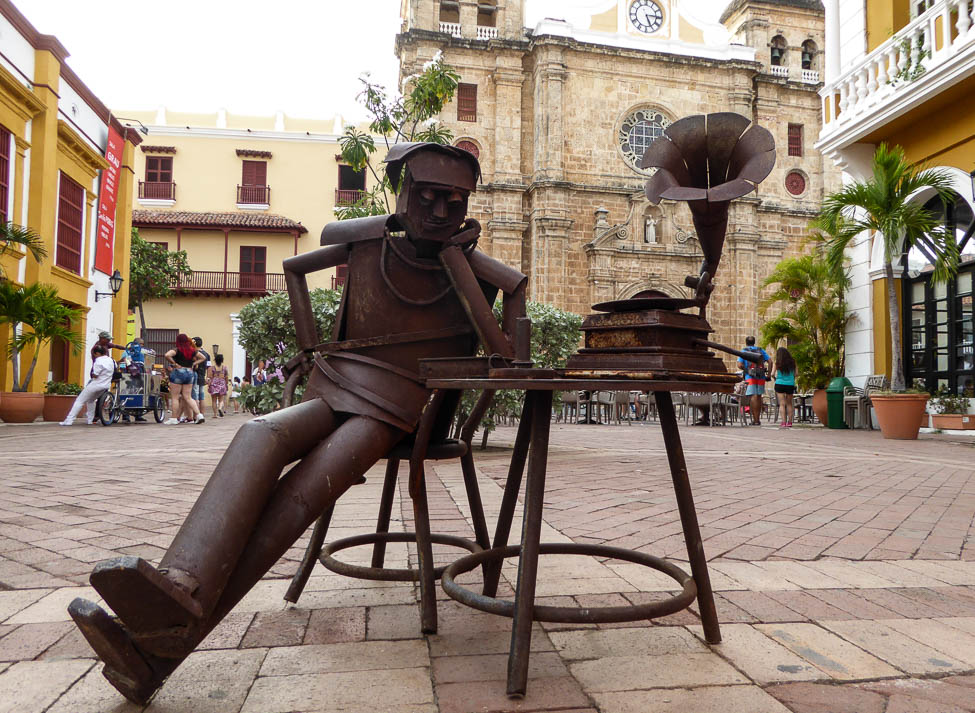
In one of the larger parks in the heart of the touristy area, we enjoyed watching a free show of cultural dances. And when Ann was feeling the heat big time after walking from Bocagrande, lo and behold, as if out of thin air, was a pretty young woman vendor ready to sell her an ice cold bottle of water for 2000 pesos (about 60 cents). As one might imagine, the old city is very busy with visitors at almost any hour and with all the usual tourist offerings: souvenir shops, high end shops, restaurants, etc., and even old-fashioned horse-drawn buggy rides.
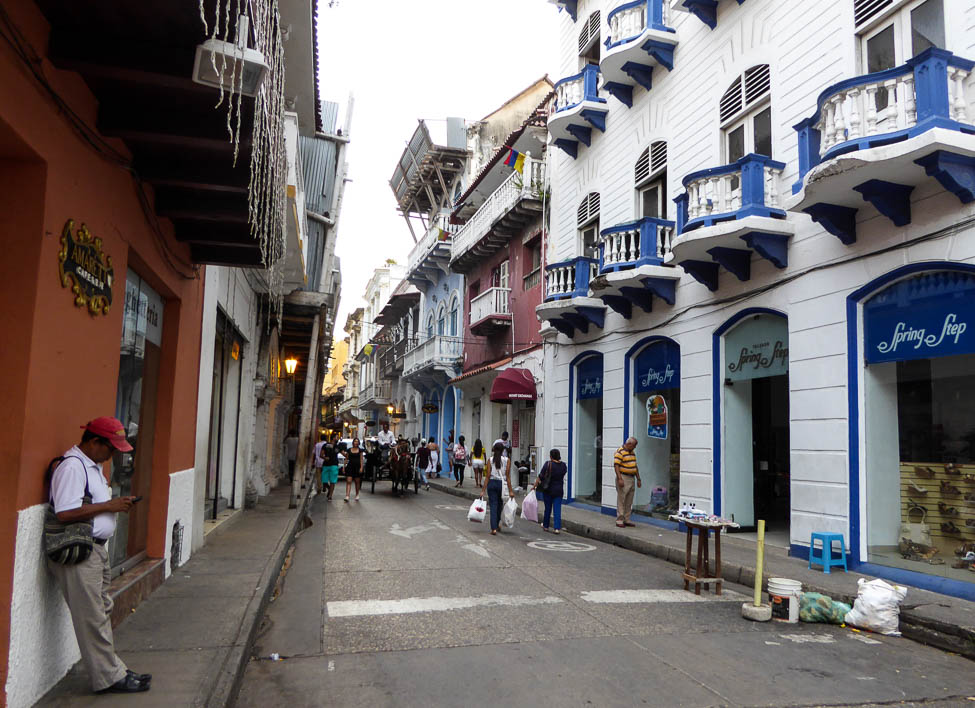
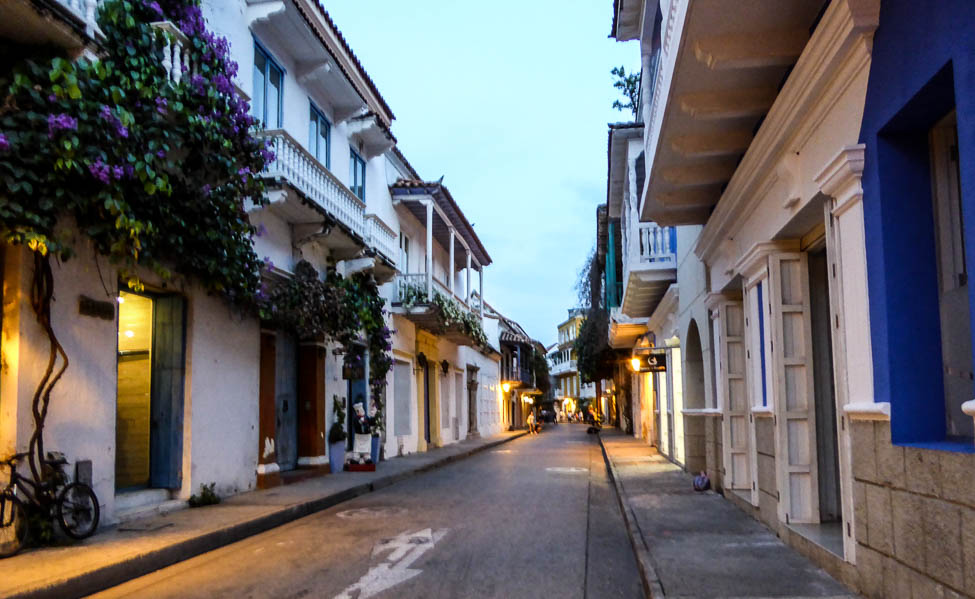
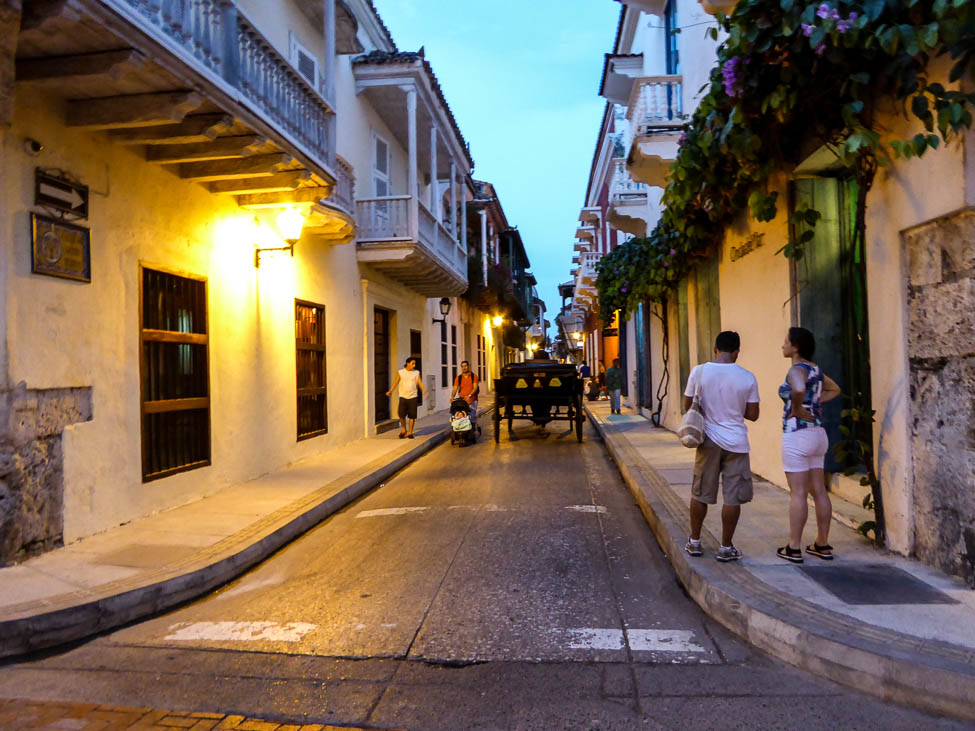
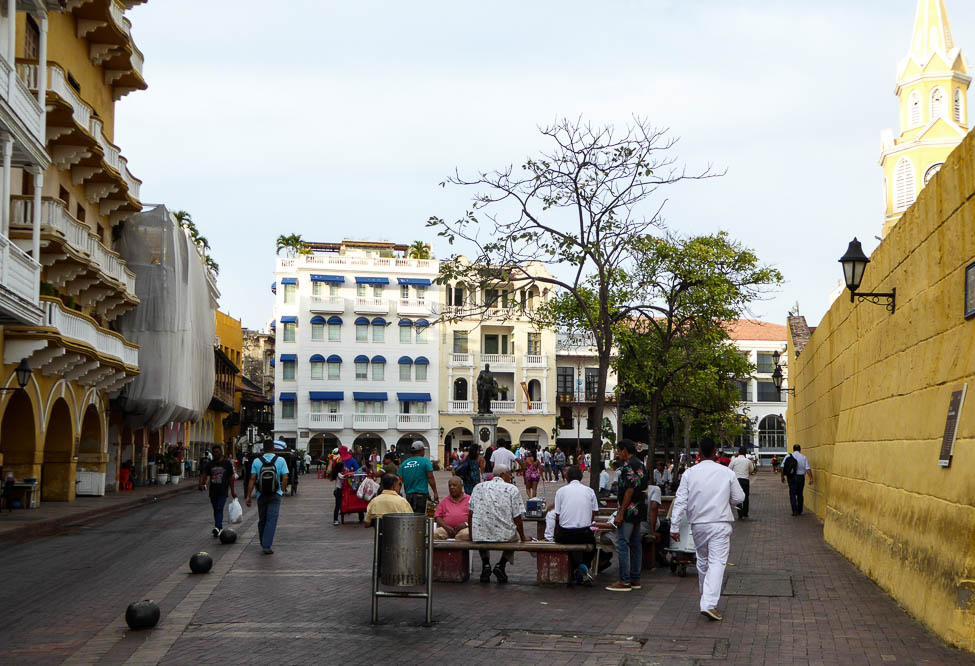

Prices for goods and services, including accommodations are higher here than in other parts of the city. That said, locals still live in the area, and when we wandered away from the main touristy areas, we saw ordinary everyday shops and slightly lower-priced restaurants.
Getsemani
Still within the old city and on the other side of a very busy wide street with a main bus stop is the more bohemian neighborhood on Getsemani.
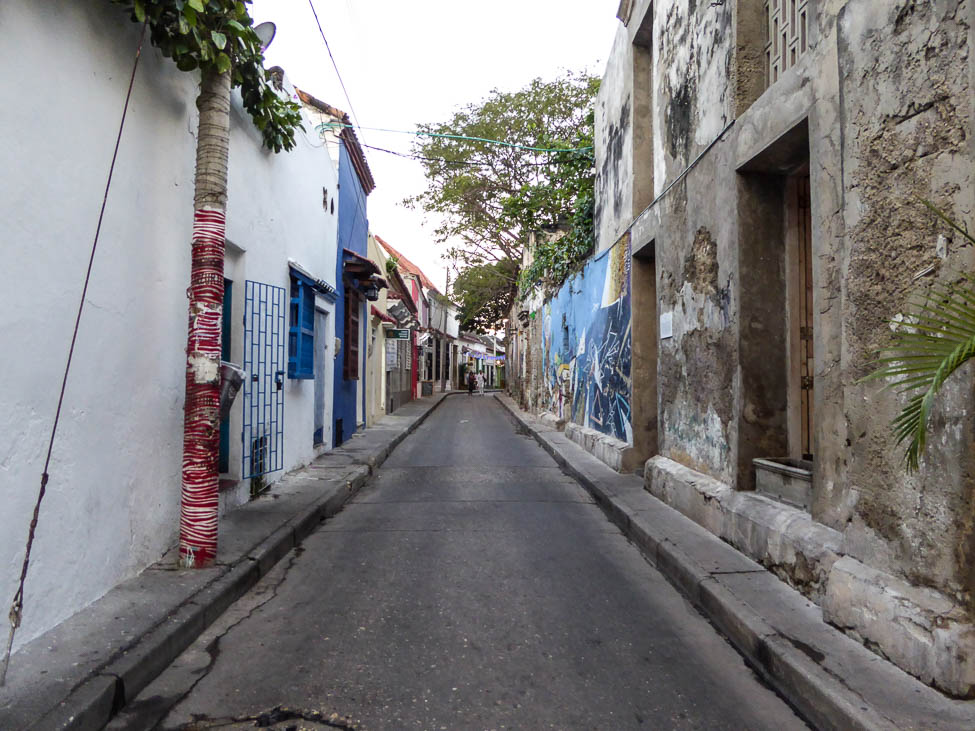
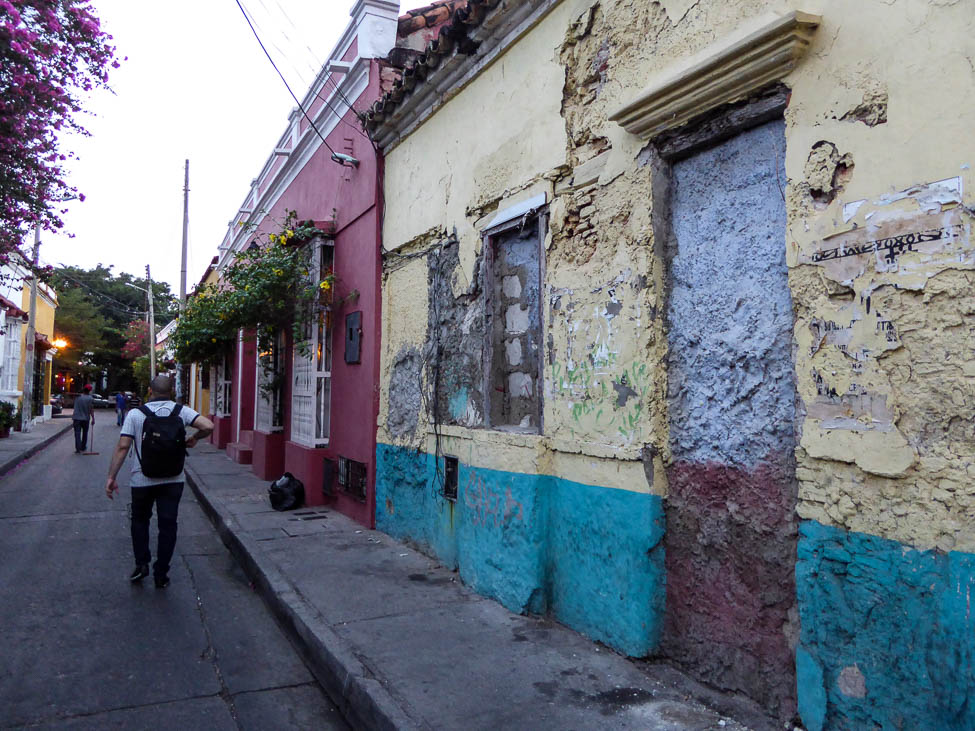
As we ventured over there late one afternoon, we passed through an area where we both thought we’d rather not walk there after dark (might be perfectly fine but we weren’t about to check it out unnecessarily). We passed a large park and then as we walked a bit further in, a small square filled with locals and tourists of all ages, including children. An Italian restaurant across a narrow street from another small square was getting ready for the evening rush by setting up their tables and chairs in the square. We also noticed many hostels catering to younger travelers and backpackers. Restaurants in this neighborhood are generally a bit less expensive, and we ended up having another typical paisa meal, again with fish, at a small family owned restaurant on a street with many hostels. We headed back to the main tourist area of the old city on a slightly different, perfectly safe, route from the way we came and hailed a taxi to take us back to our apartment, after an enjoyable late afternoon and evening.

Colombia Wrap-up
We thoroughly enjoyed our six weeks in Colombia! It’s a great value, the people are very friendly, and we met a diverse group of expats. Our favorite city was Medellin, a city we could enjoy living in (at least part time). It’s one of our three top locations so far, and with Colombia being such a diverse country, we still have lots of it to explore. At the time we traveled, the exchange rate between the Colombian peso to the dollar hovered between 3011 the day we arrived and 2750 the day we left. Therein lies a potential issue with Colombia as an expat destination: the somewhat wild currency fluctuation. We met one expat couple who moved to Medellin last year and between the time they purchased their house and when it closed, the price had gone up $10000 because of a weakening dollar. Looking at historical data, a mere three years ago the exchange rate was 1500 pesos to the dollar. Will it go back to 1500, who knows? But at that exchange rate, Colombia would no longer be the great bargain it is today. By far, this is the highest currency fluctuation we have experienced in any country we’ve visited so far on this trip. So we think there are different possible ways to play this situation if interested in full time Colombian living: lock down a long-term rental so your rent is fixed; lock down a purchase and if the dollar declines, reap a potential profit; or live there while the exchange rate is good, knowing that it could change at any time and be willing to move on if that happened.
Next Up: Isla Mujeres! (Can you guess what the “!” means?)
Ian & Ann

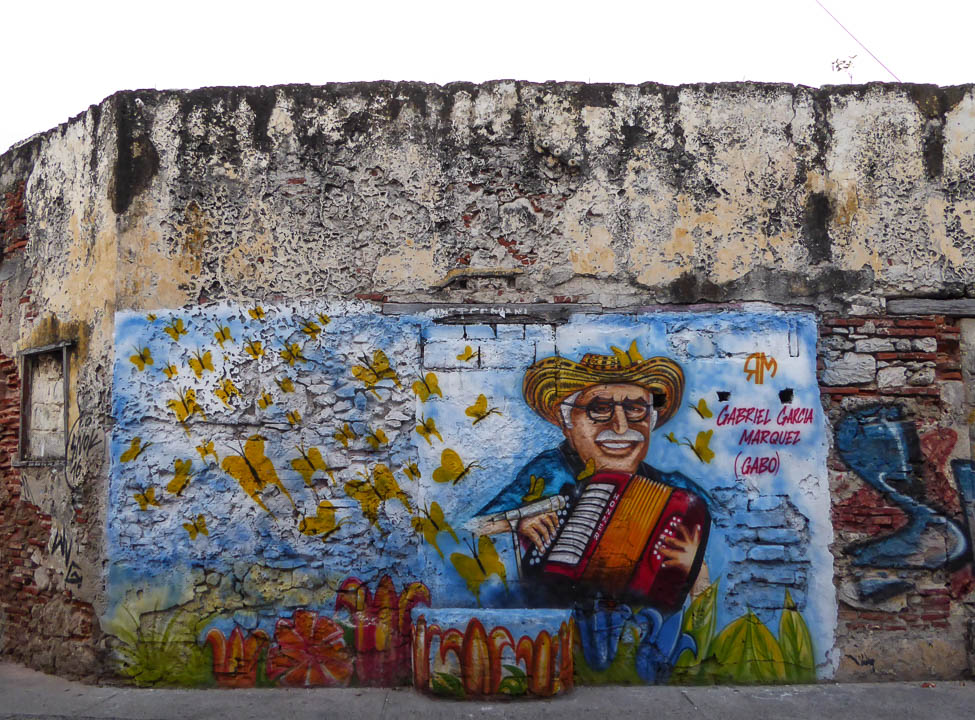
12 Comments
Loving your posts…. Miss you guys….see you soon !!!
Hi Ira,
Miss you too and hope to see you soon.
Ian & Ann
El Cartagena en tus fotos no se parece en nada a lo que recuerdo de hace 40 años. Es mucho más desarrollado. Bocagrande se parece a la sección del Rodedero de Santa Marta, a unas cinco millas al este. Nos quedamos en Santa Marta, un pueblo pintoresco. Ni siquiera recuerdo haber visto lugares para alojarse en Cartagena. Recuerdo solo la sección amurallada (walled) donde pasamos unas horas. Estaba al lado de un patio de carga de barcos (shipyard) del cual se nos aconsejó (were advised) que nos mantuviéramos alejados.
Supongo que no hiciste la pista de esquí del Monte Santa Marta. La altura de 17000 pies tal ves es demasiado alta para respirar bien.
Aquí en San Diego, la temporada (season) de lluvias está dos tercios pasado, y tenemos menos de dos pulgadas de lluvia. Las temperaturas de enero han sido principalmente en los bajos ochentas.
Hola Art,
Tu comentario en espanol es muy dificil para nosotros, pero estamos aprendiendo todavia. Aparece que Cartagena es muy diferente ahora que cuando tu habias visitado.
Ian y Ana
Reply to your last reply.
Until our trip to Argentina with you, I never traveled south of Columbia. I also traveled through Panama and briefly owned a farm in Costa Rica, where I was supposed to have a job with the Peace Corp at the OAS Tropical Agricultural Research Institute at Turrialba, near Cartago.
When I lived in the islands, I explored other islands nearby.
Columbia was the most beautiful, and it was the easiest place to learn Spanish because no one spoke English. Has that changed?
Hi Art,
That’s one thing that has not changed much in all these years. Very few people speak Spanish, even in Medellin. It’s interesting that you found Colombia the easiest place to learn Spanish because our experience, particularly in Medellin, was that we could barely communicate because everyone spoke so rapidly, even after we asked them, in Spanish, to please speak slowly.
Ian & Ann
Very nice blog. You guys are becoming real pros at this….
Hi Den,
Thanks, but we still feel like amateurs. During the time we spent in Medellin with our friends, Leah and Steven, they were surprised by how much time we put into a single post.
Ian & Ann
Loved the sculpture in the park, and the painting on the wall. Do you know where Cali is in Colombia. My maintenance man lives there and is returning there as he has retired. The I stand for Island; bringing back great memories. Glad you are getting so much from your fascinating travels. Love
Hi Norma,
Yes, we know where Cali is. We were originally considering going there but chose other places instead. Cali is know for its annual salsa dancing festival every September. Good guess about the “I” but it’s actually an “!”, exclamation point. 🙂
Ian & Ann
love the old city pictures there.
we’re leaving FL now after 2+ months, to SEA, then So CA for all of April. you’ll still be out, right? to Europe?
We’ll be in Phoenix end of March-April 5, won’t get to San Diego until probably in the fall.
Ian & Ann